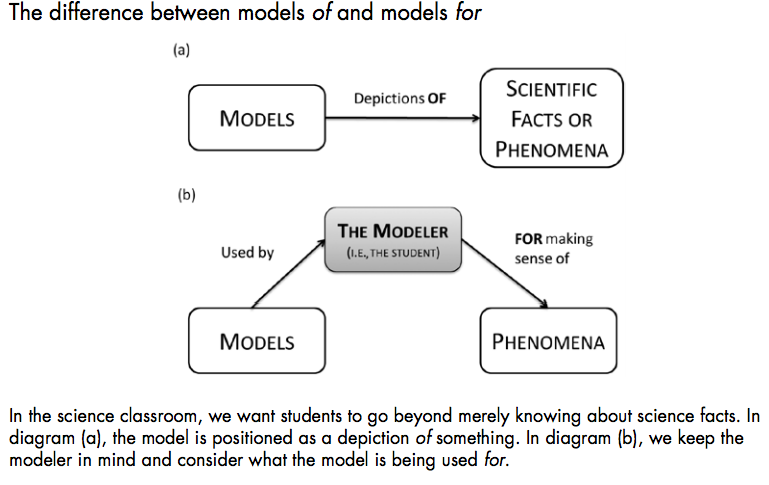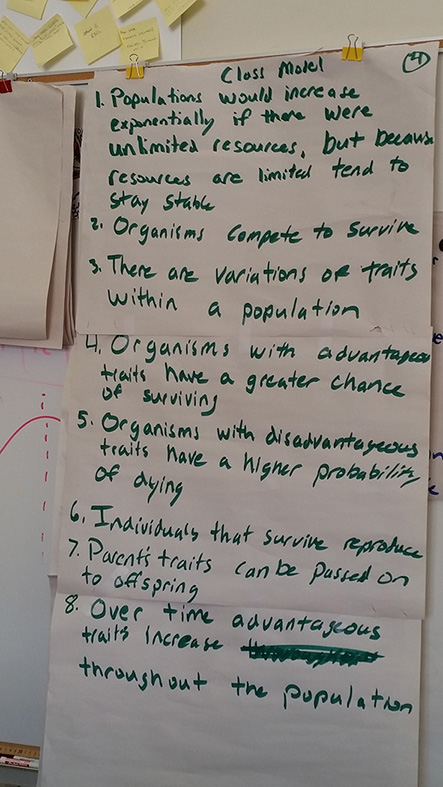Models are sets of ideas that can be used to explain natural phenomena. Scientific practice is about developing models to better understand and explain the processes we observe in nature. Models are shared and discussed among scientists and are continuously tested and tweaked through investigation, experimentation and more observations. As new evidence arises, models are refined, accepted or rejected. Models are judged by these criteria:
- Must fit most of our data and explain our observations.
- Must be realistic/plausible, given what we know about the natural world.
- Must allow us to make accurate predictions.
In MBER-Bio, we create models through the process of modeling. We are continually modeling and re-modeling our understanding of the universe, especially the biology of life on Earth.
Distinction between "Models of" vs. "Models for":
We all generally have some experience with models before we begin to use model-based reasoning in our classrooms. One common point of confusion, however, is the difference between a "representation" and a "model". We commonly use the word 'model' to describe both, but here we make an important distinction.
Representations *may* simply be "models of". For example, when we think of a model of DNA, we often think of the double helix depicted in so many science classrooms, either as a poster or as a 3-D ball-and-stick representation of the macromolecule. The model of DNA is a representation of our current understanding of what DNA looks like.
In model-based reasoning, we want to take care to have "models for" in the classroom. The model of DNA becomes a model for reasoning about DNA when we use the model to explain natural phenomena. For example, how does DNA replicate so that every cell in the body has the same set of instructions available to start from? A DNA model can be used for answering this question. We can use the base pairing evident in the macromolecule to begin to reason how replication and copy fidelity might be accomplished. In this way our "model of" becomes a "model for".
The models presented in these curricular resources are generally presented as a series of statements. Where appropriate, we have tried also to include visual representations (e.g. energy diagrams in the Model Triangle Chemical Reactions). There is certainly nothing wrong with including representations in your classroom and curriculum. Whenever you choose to use a representation for a model, however, please take a moment to consider: can the students use this representation to help them make sense of phenomena? If the answer is no, what is the purpose of posting the representation? We are hoping the materials posted in classrooms become a tool for students to see their progression of sense-making about phenomena and as a resource for reasoning when they encounter new phenomena.

Learn more about Models and Modeling: Developing and Using Models by Cynthia Passmore, Christina Schwarz and Jocelyn Mankowski from the book Helping Students Make Sense of the World Using Next Generation Sciences and Engineering Practices.
This is an example of a classroom Model FOR Natural Selection:
